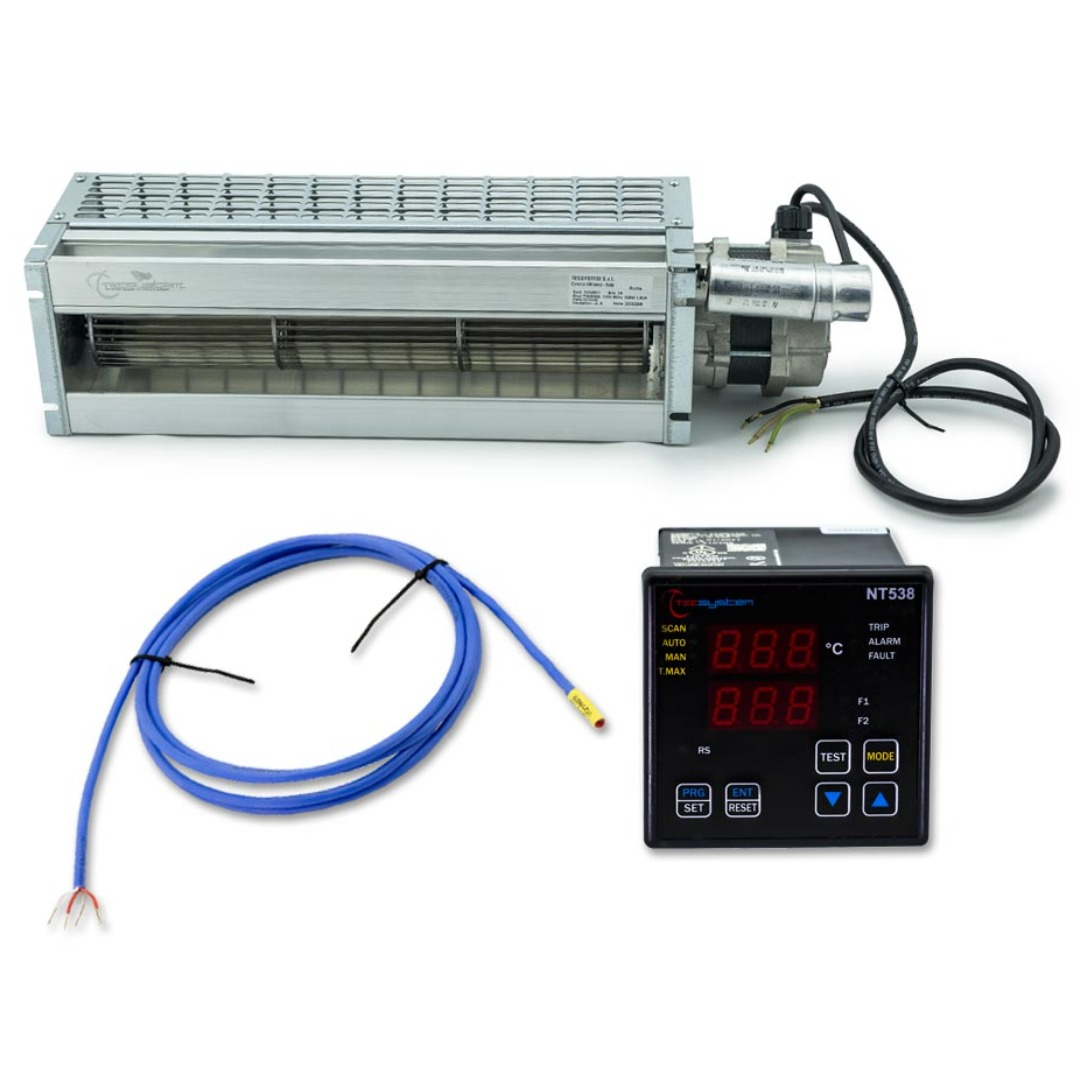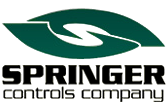 Various manufacturing processes necessitate the control of temperatures for safety purposes and maintaining efficiency during production. In various industries, electronic temperature controllers help keep temperatures within certain parameters to prevent system failures that can increase repair costs and unplanned downtime. Temperature control is vital in many industrial processes to ensure products perform acceptably for their end users. Understanding the basics of electronic temperature control systems enables operators, production managers, and other stakeholders to choose the best equipment for their applications.
Various manufacturing processes necessitate the control of temperatures for safety purposes and maintaining efficiency during production. In various industries, electronic temperature controllers help keep temperatures within certain parameters to prevent system failures that can increase repair costs and unplanned downtime. Temperature control is vital in many industrial processes to ensure products perform acceptably for their end users. Understanding the basics of electronic temperature control systems enables operators, production managers, and other stakeholders to choose the best equipment for their applications.
What is an Electronic Temperature Controller?
Also referred to as a digital controller, an electronic temperature controller is one part of a system that keeps temperatures constant in certain industrial processes or for material treatments. It helps maintain the desired temperature, known as a “set temperature” or “set point,” which is programmed externally.
The controller is one part of a temperature control system that includes a:
- Cooling/heating system
- Resistance Temperature Detector (RTD) (or thermocouple) to sense temperatures
- Temperature controller
By comparing the current temperature to the set temperature, the system adjusts the temperature of the process or material. This is done via the RTD or thermocouple, which compares current to set temperatures. When the system senses that the current temperature is outside the programmed parameters, it signals that there’s an error, adjusting temperatures with heating or cooling elements as needed to effect a change in temperature through the use of a heater, fan, control valve, or another element that then heats or removes heat.
Electronic Temperature Controller Applications
While there are numerous applications for industrial electronic temperature controllers, they serve a basic role. They take the temperature measurements from a thermal sensor like a thermocouple, compare it to the set temperature, and then calculate how much heating or cooling must occur to maintain a constant temperature.
Electronic temperature controllers are used for processes and in industries that include:
- Dry Type and Oil-Cooled Transformers: Protecting transformers from overheating and damage is critical as large transformers are expensive and carry long lead times. Additionally, these types of transformers provide power for large buildings, affecting many people and businesses if they go down.
- Large Motors/Drives: Monitoring the temperature of motors and bearings can help identify problems and prevent damage to critical motors and drives used in industrial applications.
Electronic temperature controllers are also used to regulate temperatures in common appliances like air conditioners, refrigerators, and water heaters.
Types of Electronic Temperature Controllers
Many different types of electronic temperature controllers are available, offering numerous capabilities and features. They can also be categorized in several ways, though most are either known as “single-loop” or “multi-loop” controllers. Single loop controllers have one input, with either a single output or multiple outputs regulating the heat amount. Multi-loop controllers feature multiple inputs and outputs, which can regulate several loops, allowing them to control more functions.
Let’s look at some specific types of electronic temperature controllers.
Analog Temperature Controller
As the most elementary electronic temperature controllers, analog controllers are inexpensive yet versatile. They tend to be robust and reliable when used in industrial settings amid harsh conditions. Typically, these basic controllers utilize a knob dial, while their temperature controls are simply on or off. While useful, their simplicity and lack of visible display make them practical only for all but the basic temperature control tasks. They also lack communication capabilities, limiting them to mainly switching on or off heating or cooling devices.
Limit Electronic Temperature Controller
These temperature controllers don’t control the temperature independently but limit process temperatures for safety. They’re essentially independent safety devices used parallel within an existing control loop. Capable of accepting process inputs with limits for low and high temperatures, they’re similar in this sense to regular controllers. However, they’re essentially part of redundant control circuitry that shuts down the thermal system if it reaches a high temperature. An example of a limit controller would be shutting off a furnace when it exceeds the set temperature to prevent damage to the furnace or product from extreme temperatures.
General Purpose Electronic Temperature Controller
Used for most standard industrial processes requiring temperature control, general-purpose controllers come in various sizes with multiple outputs. These can be programmed to regulate the temperature within specific parameters, using built-in algorithms to alter the temperature to an optimal level automatically. Usually installed in the front panel so an operator can easily access it, they help reduce waste while increasing the efficiency of an operation.
Valve Motor Drive Controller
This is a specific type of general-purpose controller, known as a valve motor drive (VMD) controller, designed to control valve motors in industrial settings. Used for applications that include controlling gas burners along production lines, VMD controllers utilize algorithms that allow them to tune accurately and react quickly, adjusting the valve’s position depending on the energy needed for the process at any given moment.
Profile Electronic Temperature Controller
These are also known as ramp-soak controllers, referring to the programming of the set temperature – known as “ramp” – and the time it remains at this set temperature – known as “soak.” These profiling controllers allow operators to program multiple set temperatures and how long they will remain at each specific temperature. With a single ramp or soak considered as one segment, a profile controller allows operators to enter multiple segments, allowing more complex temperature profiles.
These profiles are often referred to as “recipes,” which can be stored for later use. Smaller profile controllers might have the capacity for four recipes with sixteen segments, whereas more advanced ones will allow for additional recipes and segments. Profile controllers can execute temperature changes over time without an operator. Applications include annealing, complex process furnaces, environmental chambers, and heat treating.
Multi-Loop Electronic Temperature Controller
Capable of accepting more than a single input variable, multi-loop controllers control multiple process loops. Essentially, they’re like multiple individual electronic temperature controllers in a single system. Normally these controllers are mounted behind the panel and tend not to have a physical user interface with switches and displays.
Instead, they use a communications link dedicated for the purpose, while programming each loop is similar to programming a panel-mounted single loop controller. Requiring specialized software applications, these electronic temperature controllers are configured with configuration downloads from a computer to the controller via the communications interface, from which data can be retrieved.
Multi-loop controllers are compact and modular, usable with a programmable logic controller (PLC) or as a separate system. When operated with a PLC, temperature controls work from the PLC’s processor, which allows quicker scan rates. They also provide access to all the loops through a single point within the software, reducing costs by eliminating the need for more panel space, cutouts, and wiring.
Multi-loop controllers also offer additional features, such as:
- Ability to replace controller modules without powering down the system.
- Enhanced security features prevent changes to critical settings and that limit the information available to an individual operator.
- Higher density loops than single loop controllers.
- Reduces wiring necessary due to common connection point for communications interface and power supply.
They’re also capable of auto-configuring after replacing controller modules.
Choosing the Right Electronic Temperature Controller
When choosing an electronic temperature controller, several factors must be considered. Precision control and the ease with which a process can be controlled should be considered. The easiest controller to tune for the lowest price will usually achieve the best results.
Simple processes with a well-matched heater (not over or undersized) and without rapid cycling can use on-off temp controllers. A proportional controller is needed for those systems subject to cycling or with an unmatched heater (either over- or undersized).
Springer Controls offers several electronic temperature controllers:
- Controllers for Transformers & Motors: Tecsystem 2, 3, 4, 8, and 12 channel temperature controllers featuring individual temperature selection, capable of monitoring for almost any application that requires a programmable temperature controller.
- Liquid-Cooled Controllers: Used primarily for hermetic and oil-filled transformers, these Tecsystem controllers also are designed for bearings, coolants, diesel generators, exhaust gas, and lubricating oil.
- Fan Controllers: When integrated into a production system, these controllers can cool transformers to withstand higher than their nominal ratings while keeping optimal temperatures and maintaining safe conditions.
Springer Controls also offers various accessories and sensors for electronic temperature controllers.
In business for over a quarter century, Springer Controls is a leader in the electrical controls industry. We supply temperature controllers, motor starters, hoist controls, signaling devices, and other control apparatus with applications across multiple industries. For questions on our electronic temperature controllers and complementary products, contact Springer Controls today!
